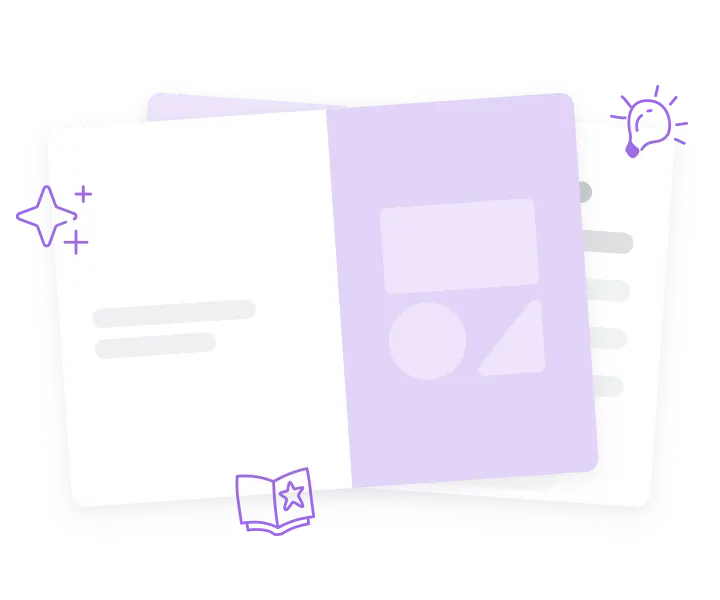settings
children
With Famly since
I see you staying at work late to make sure the classroom is ready for the next day. I see you doing the vital work of caring for dozens of children, and connecting with their families.
I see you doing one of the most critical jobs in the world, and wondering if it’s worth it.
I assure you that right now, more than ever before, you are needed. Parents need you, communities need you, and of course children need you.
But I also know that the work we’re doing is more challenging than ever. Which is why especially now, you need to remember to give yourself time to rest. Burnout is a common risk in early childhood education, and given the stresses we’re all facing, it’s understandable.
Luckily, there are a few things you can do, each week or each day, to find some breathing room in the middle of everything.
In this article, we’ll dive into how you can recognize burnout when you feel it, and what you can do to prevent burnout — both for yourself, and for your team.
The big ideas
What is burnout?
First, burnout is a very real thing — just ask the World Health Organization. According to the WHO, we most often feel burnout as the following symptoms:
- Feeling exhausted, or low on energy
- Feeling more distant from your job, or more often feeling negative or cynical about your job
- Reduced effectiveness on the job, especially with routine duties
Often times, once one person starts to experience burnout symptoms like losing energy and enthusiasm, coworkers feel obliged to pick up the slack, and spend extra time supporting that burnt-out colleague. In other words, burnout doesn’t happen in isolation.
Burnout is something you and your team need to take seriously, and work to prevent it before it sets in.
The causes of burnout in early childhood education
Unfortunately, those of us in the child care sector are all too susceptible to burnout. It might be the poor pay and long hours, the lack of benefits, the lack of support from outside the sector, or any number of stresses that we’re facing down right now. Knowing all of this, it’s not all that surprising that in 2012, we saw a reported annual turnover rate of 30 percent among early childhood educators in the United States.
When you wait and don’t address the stress, and start dreading going to work every day, things start to seem worse. Low pay, little respect, and a revolving door of co-workers that need to be trained. The job gets hard, and the children in your care might start to feel that you’re feeling a bit off.
That’s why it’s so critical to the Early Years sector especially that we watch out for burnout, and take steps to avoid it. It’s not just about us — it’s for the children, too.
Put some more play in your day
As teachers, we spend a fair amount of our days planning rich play experiences for children. But have we explored what play means to us as adults?
Peter Gray, author and psychologist who focuses on the importance of play, writes:
“Perhaps play would be more respected if we called it something like ‘self-motivated practice of life skills,’ but that would remove the lightheartedness from it and thereby reduce its effectiveness. So we are stuck with the paradox. We must accept play’s triviality in order to realize its profundity.”
Play is critical for children, and the same holds for adults. But we might give our play different names: Hobbies, interests, pastimes, passions.
In a training session I once took with Life is Good Playmakers, we explored the idea of self-preservation, and how we can all create a play plan for ourselves. This is of course based on our individual interests and what brings us joy.

Here’s what my play plan looks like:
- Spending time outside each day. Playing in the snow, by the lake, in the leaves. Part of my plan is making sure I’ve got the clothing and gear for the weather, so I’m comfortable while I’m taking this time for myself.
- Having game nights with friends. Whether it’s with family, friends or over Zoom, laughing and playing games with friends always helps lift my sprits.
- Taking a break to play a game on my phone. Phones and social media can be times suckers though, so it’s important to not to get sucked in.
- Painting with watercolors. I’m not an artist by any means, but that’s not important. What matters is that this brings me a whole lot of joy.
Play might seem frivolous or indulgent to you, especially in such a critical time. But now is a better time than ever to make space for it — to give your brain room to be creative and unwind from your day.

Practicing appreciative inquiry in ECE
Maybe you haven’t heard of appreciative inquiry before, but it’s nothing to be afraid of. Put simply, it’s the habit of deliberately focusing on and highlighting the victories, successes and high points of your work.
In your child care center, you can use appreciative inquiry to find more bright moments in each day. Especially when it’s so easy to get overwhelmed by stresses, we’ve got to celebrate the high points as they come.
As early childhood administrators, leaders, and teachers, here are a few ways we can practice appreciate inquiry on a daily basis:
- Start your staff meetings on high notes. Take five minutes with a prompt like, ”Tell me about a high point of your week.” Doing this before you dive into the week’s challenges sets you off on a more optimistic note — it’s a game-changer.
- Ask daily questions of gratitude. Imagine you’re cleaning up the classroom, and someone asks, “what was the best part of your day?” Especially for coworkers struggling during this time, it’s nice to be prompted to dwell on the positives.
- Use strength-focused questions when setting goals and during evaluations. Instead of looking for weak points to improve, look at those strengths you can develop even further. You could ask a teammate, ”Can you tell me about a time when you incorporated a child’s individual needs into the curriculum?” or “Describe a time when you felt like you worked really well with a co-worker or parent.”
- Think about how you frame your staff or parent surveys. If you’re asking families to tell you what they aren’t satisfied with, it’s an invitation to get negative. If you ask them about highlights, best memories, or favorite takeaways, the outcomes are more positive and uplifting. The goal is to learn more about what is working well and do more of it.
If you’re interested in learning more about using appreciative inquiry in conversations, check out Conversations Worth Having by Jacki Stavros and Cheri Torres.
S.E.E.D Certification: how can it help?
One resource that’s been incredibly valuable for myself and the families in my own program is the S.E.E.D. certification. It’s a program to help us all get a little better with meeting our emotional needs (for children, parents and staff), and I’ve found it helpful in approaching some of the tough conversations you might have to have in child care.
Going through the S.E.E.D. certification has allowed for each teacher in the setting to take time to deeply reflect on their own triggers, biases and upbringing, which shape the way we act and respond to things in our lives. The trainings helped us gain some better understanding of subjects like bias, self-awareness, sensory integration, self-care, boundaries, and more.
Again, it gets back to this core idea of preventing burnout: If we want to take care of children, we’ve got to take care of ourselves, too. My favorite quote by founder Alyssa Blask Campbell is, “A dysregulated adult cannot regulate a dysregulated child.”

Making a plan for self-care
The work we do is hard, and it’s hard to make time for yourself throughout the day. Right when you think you’ve got time for a quick lunch break, the youngest child decides nap time just isn’t for them today. I get it.
Self-care is not about a day at the spa. It is not about getting your nails done. Self-care can look like drinking water, eating meals when you are supposed to, and getting enough sleep. Last week, I was guilty of not doing any of this. I got through the whole day, and it wasn’t until I sat down at 6 p.m. that I realized I had not eaten, used the bathroom, or drank water. That is not sustainable.
I wrote a whole book on strategies for burnout, and I’m still not immune. I know that taking these daily wellness steps is easier said than done — and I also know they’re easier when we help each other. Sometimes, you just need a colleague’s reminder to drink some water, to take a bathroom break, to remember to eat your lunch. From these daily details to making play plans and taking training sessions, every step to avoid burnout is an investment in your own well-being, and that of the children in your care.
I want to leave you with five key thoughts:
- Know the signs of burnout. It’s a real thing — and there are some ways to help you combat it before it gets too serious.
- We all need play. Think about what play means to you, and make a play plan today.
- Go ahead-go to bed early. You deserve it. Have some water with lemon, your body will thank you.
- Reframe your days with appreciative inquiry. It’s an easy way to start things off on a high note, and to focus on the positives over the negatives.
- Explore more training to prevent burnout. Programs like the S.E.E.D. Certification can help you, your team, and the children and parents at your center.
- Preventing burnout is a team effort. Whether it’s a colleague or someone at home, having someone to help with these little daily reminders goes a long way.
Preventing burnout can be hard, especially in trying times. But it’s easier when we have plans and strategies for it. Children need you now more than ever — to care for them, and to help them grow to be emotionally intelligent, self-aware, kind, respectful and curious.
What will you do today for you?
Ellen Drolette has been working in the early childhood education sector for 25 years, and specializes in early childhood workforce development and capacity. You can learn more about Ellen and her work on her website, www.positivespinllc.com.
Your personal writing assistant
Fix spelling, grammar, and improve the tone of every message and newsfeed post. All with Sidekick.
Learn how Sidekick works






%20(2).png)



